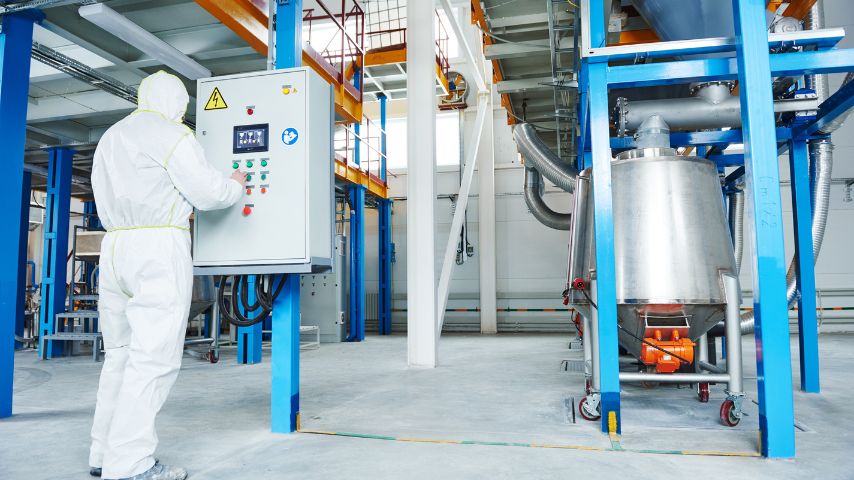The chemical industry is a cornerstone of Malaysia’s industrial landscape, contributing significantly to the nation’s economic growth. However, this sector also faces inherent risks due to the complex and hazardous nature of chemical processes. Accidents involving chemical spills, fires, explosions, and toxic releases can result in significant harm to both workers and the surrounding communities, as well as extensive environmental damage. This makes safety a top priority for chemical manufacturers and operators in Malaysia.
One critical tool that plays a significant role in preventing such hazards is the HAZOP (Hazard and Operability) review. A systematic method used to identify potential hazards and operability issues in industrial processes, HAZOP has become indispensable in ensuring the safety and efficiency of chemical operations. In Malaysia, a country that is rapidly advancing its chemical manufacturing capabilities, the implementation of HAZOP reviews can be the key to preventing accidents and ensuring that operations are both safe and compliant with industry standards.
This article will explore the importance of HAZOP reviews in Malaysia’s chemical industry, how they help prevent hazards, and the specific benefits they offer in improving safety, compliance, and operational efficiency.
Understanding HAZOP Review
HAZOP is a structured and systematic technique used to identify hazards and operability problems in process industries, especially those involving complex processes such as the chemical sector. The methodology is based on a team-oriented approach that systematically examines each process in detail, identifying potential deviations from the intended operation and assessing their consequences.
The core principle of HAZOP revolves around the identification of deviations—variations from the normal operating conditions. These deviations are then analyzed to identify potential causes, understand the consequences, evaluate safeguards, and recommend actions to reduce risks. HAZOP reviews are carried out at various stages of plant design, operation, and after any significant changes to the process.
The HAZOP process typically involves:
- Planning: Identifying the scope of the review, selecting the team, and defining the process nodes to be analyzed.
- Execution: The team systematically examines each part of the process, applying guide words (such as “more,” “less,” “none,” “as well as”) to explore potential deviations and assess their impact.
- Reporting: Findings are documented, and recommendations are made to reduce or eliminate risks, including modifying designs, improving equipment, and enhancing safety measures.
The Role of HAZOP in Hazard Prevention
HAZOP reviews are pivotal in helping chemical industries identify and mitigate potential hazards that could otherwise go unnoticed. By carefully analyzing every aspect of a process, from equipment design to human interactions, HAZOP provides a comprehensive hazard analysis framework.
Key hazards that HAZOP identifies include:
- Process Design Flaws: Issues such as improper pipe sizing, incorrect material specifications, or inadequate control systems can lead to hazardous situations. HAZOP identifies these flaws before they result in accidents.
- Equipment Failures: Chemical plants rely heavily on equipment to maintain safe operating conditions. Failures in valves, pumps, reactors, or pressure relief systems can have catastrophic consequences. HAZOP helps identify vulnerabilities in these systems.
- Human Error: Even the best-designed processes can be compromised by human error. Operator mistakes, inadequate training, or failure to follow procedures can trigger accidents. HAZOP evaluates human factors and operational conditions to prevent such errors from escalating.
- External Factors: HAZOP also accounts for external factors that might affect safety, such as natural disasters, supply chain disruptions, or other unforeseen events. By identifying such risks, companies can prepare better safety measures and contingency plans.
By identifying these hazards, HAZOP reviews help chemical industries to implement safeguards, such as:
- Process redesigns to address identified vulnerabilities.
- Installation of safety equipment, like pressure relief valves or gas detectors.
- Operator training programs to mitigate human error.
- Emergency response procedures that can be activated in the event of an incident.
This proactive hazard identification reduces the likelihood of catastrophic accidents, protecting both human life and the environment.
Specific Benefits of HAZOP in Malaysia’s Chemical Industry
In Malaysia, HAZOP reviews offer a wide range of benefits that extend beyond hazard prevention. Some of the most important advantages include:
1. Regulatory Compliance
The chemical industry in Malaysia is subject to strict regulations from organizations like the Department of Occupational Safety and Health (DOSH), the Ministry of Natural Resources and Environment (NRE), and international safety standards like OSHA and ISO 45001. Non-compliance with these regulations can result in significant penalties, including fines, operational shutdowns, or even the closure of a plant.
HAZOP reviews ensure that chemical companies in Malaysia comply with these regulations by identifying potential safety gaps and recommending corrective actions. In the event of an audit or inspection, companies can demonstrate their commitment to safety and regulatory compliance by showing that they have conducted thorough HAZOP reviews and implemented the necessary safety measures.
2. Cost Reduction and Operational Efficiency
Chemical accidents can be costly, not only in terms of fines but also due to production downtime, equipment damage, and environmental remediation. HAZOP reviews help companies prevent accidents before they occur, saving money in the long term.
By identifying inefficiencies in process design and potential failure points, HAZOP reviews can also help optimize plant operations. This leads to more efficient production processes, reduced waste, and better resource utilization, all of which can improve the company’s bottom line.
3. Enhancing Safety Culture
Regular HAZOP reviews foster a culture of safety within organizations. By involving employees from different departments—engineers, operators, and safety professionals—HAZOP encourages open dialogue and shared responsibility for safety. This team-oriented approach helps build a strong safety culture where everyone is committed to maintaining safe and efficient operations.
Furthermore, the insights gained from HAZOP reviews can lead to improved training programs. Employees gain a deeper understanding of the hazards associated with their daily operations and are better equipped to recognize and respond to potential risks.
4. Environmental Protection
Chemical companies must operate in a way that minimizes their impact on the environment. Accidental chemical spills, gas leaks, and other hazardous events can cause severe environmental damage. HAZOP reviews help identify environmental hazards—such as improper waste disposal or inadequate containment measures—and provide actionable solutions to prevent environmental harm.
By preventing hazardous releases and ensuring that safety measures are in place, HAZOP contributes to sustainable operations and aligns with Malaysia’s growing emphasis on environmental protection.
Also read: NEBOSH Strategies for Managing Safety in the Transport Industry
Challenges in the Malaysian Chemical Industry
Despite the benefits of HAZOP reviews, Malaysia’s chemical industry faces several challenges that may hinder safety efforts. These include:
1. Aging Infrastructure
Many chemical plants in Malaysia operate with aging infrastructure, which increases the risk of equipment failure and safety incidents. Outdated equipment and poorly maintained systems are more prone to breakdowns, making it essential to identify weaknesses early through HAZOP reviews.
2. Rapid Industry Growth
The rapid expansion of Malaysia’s chemical sector often outpaces the implementation of comprehensive safety measures. New plants and processes may be rushed into operation without sufficient hazard analysis, leading to potential safety risks. HAZOP reviews can help mitigate this risk by ensuring that safety is integrated into the planning and design of new operations.
3. Human Error and Training Gaps
Although Malaysia has made strides in improving worker safety, human error remains a significant risk. Inadequate training, lack of safety awareness, or failure to follow procedures can lead to accidents. HAZOP helps address these issues by ensuring that human factors are considered during hazard identification and risk assessment.
How HAZOP Reviews Can Address These Challenges
HAZOP reviews provide a systematic way to address the challenges faced by the Malaysian chemical industry. By implementing regular HAZOP reviews, chemical plants can:
- Enhance infrastructure safety by identifying outdated equipment and recommending upgrades or replacements.
- Ensure the safety of new plants by conducting HAZOP reviews during the design and construction phases.
- Minimize human error by involving a broad team in the review process, increasing safety awareness and ensuring that all employees are trained on hazard identification and mitigation.
Conclusion
HAZOP (Hazard and Operability) review is an invaluable tool for identifying and mitigating hazards in Malaysia’s chemical industry. By proactively identifying risks, improving regulatory compliance, reducing costs, and fostering a culture of safety, HAZOP plays a crucial role in preventing accidents and ensuring that chemical operations are safe, efficient, and sustainable.
As the chemical industry in Malaysia continues to grow, integrating regular HAZOP reviews into the safety management system will be essential in meeting the challenges of modern industrial operations. By prioritizing safety, Malaysia’s chemical industry can protect both its workers and the environment while ensuring continued success in a competitive global market.
Also Read
- ► How Can a Crypto Advertising Agency Assist in Rebranding Efforts in 2025?
- ► Hellstar Clothing emerged as a brand that embodies rebellion and creativity
- ► BBGO Game: Where Fun and Fortune Meet Seamlessly
- ► Common Mistakes When Seeking Cash for Cars Quotes
- ► How to Choose the Best Slide and Swing Door for Your Space
- ► Hellstar Shirt Styles From Classic to Contemporary
- ► Cargo Corteiz A Closer Look at the Iconic Streetwear Staple
- ► Spider Hoodies in Popular Music Videos
- ► Why Choosing the Best Nephrologist Doctors is Crucial for Kidney Care
- ► Why a Digital Lock for Your Metal Gate is a Smart Investment
- ► How Engineering Solutions Drive Innovation in Manufacturing
- ► How to Layer Chrome Heart Jeans for a Chic Look
- ► Essential Tips for Google Store Repair Services
- ► Benefits of Digital Signage Solutions for Education Institutions
- ► How School Environment Shapes a Child’s Social Development





